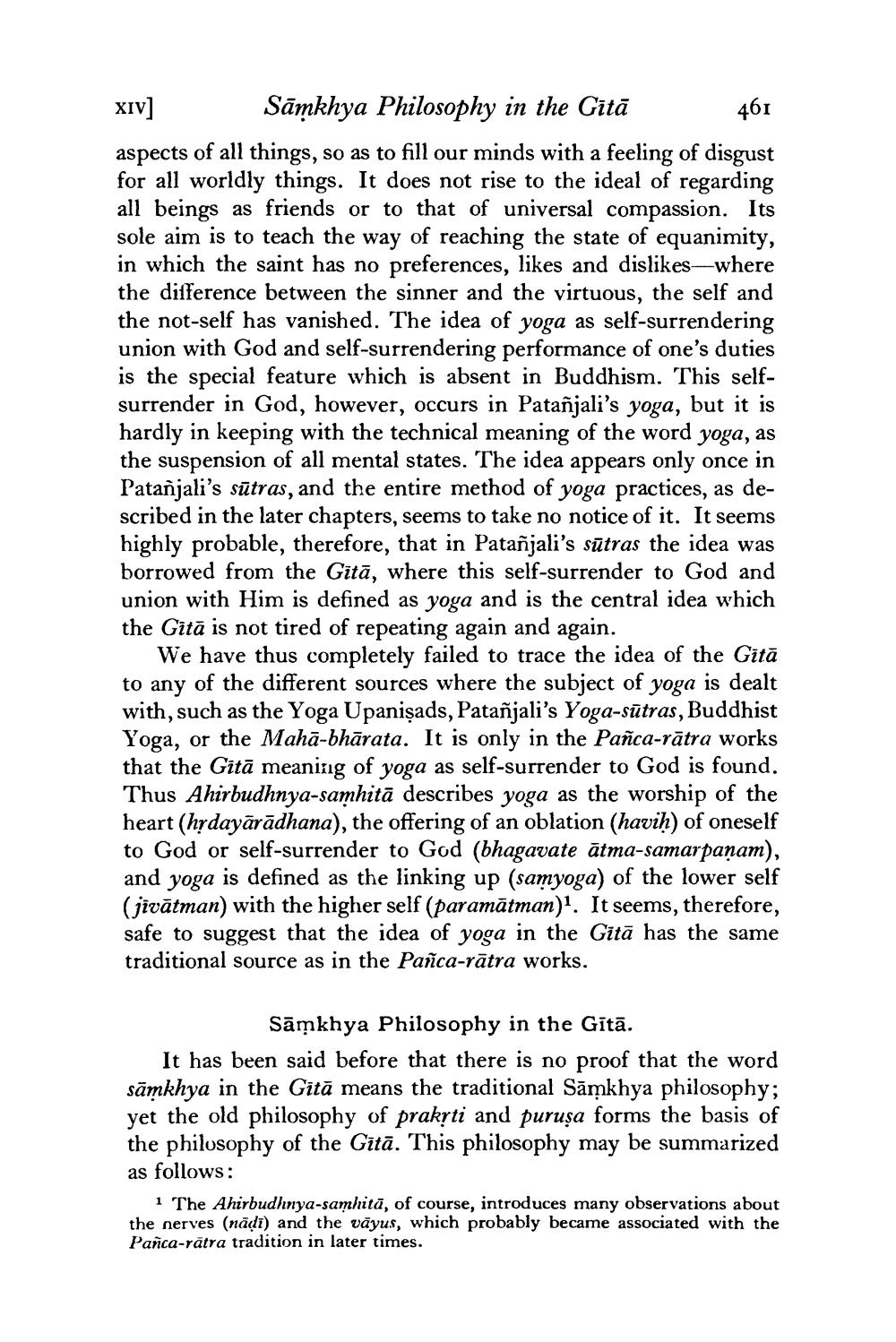________________
XIV]
Sāmkhya Philosophy in the Gītā 461 aspects of all things, so as to fill our minds with a feeling of disgust for all worldly things. It does not rise to the ideal of regarding all beings as friends or to that of universal compassion. Its sole aim is to teach the way of reaching the state of equanimity, in which the saint has no preferences, likes and dislikes—where the difference between the sinner and the virtuous, the self and the not-self has vanished. The idea of yoga as self-surrendering union with God and self-surrendering performance of one's duties is the special feature which is absent in Buddhism. This selfsurrender in God, however, occurs in Patañjali's yoga, but it is hardly in keeping with the technical meaning of the word yoga, as the suspension of all mental states. The idea appears only once in Patañjali's sūtras, and the entire method of yoga practices, as described in the later chapters, seems to take no notice of it. It seems highly probable, therefore, that in Patañjali's sūtras the idea was borrowed from the Gitā, where this self-surrender to God and union with Him is defined as yoga and is the central idea which the Gitā is not tired of repeating again and again.
We have thus completely failed to trace the idea of the Gitā to any of the different sources where the subject of yoga is dealt with, such as the Yoga Upanişads, Patañjali's Yoga-sūtras, Buddhist Yoga, or the Mahā-bhārata. It is only in the Pañca-rātra works that the Gītā meaning of yoga as self-surrender to God is found. Thus Ahirbudhnya-samhitā describes yoga as the worship of the heart (hrdayārādhana), the offering of an oblation (haviḥ) of oneself to God or self-surrender to God (bhagavate ātma-samarpaņam), and yoga is defined as the linking up (samyoga) of the lower self (jivātman) with the higher self (paramātman)". It seems, therefore, safe to suggest that the idea of yoga in the Gitā has the same traditional source as in the Pañca-rātra works.
Sāmkhya Philosophy in the Gītā. It has been said before that there is no proof that the word sāmkhya in the Gītā means the traditional Sămkhya philosophy; yet the old philosophy of prakyti and purusa forms the basis of the philosophy of the Gitā. This philosophy may be summarized as follows:
1 The Ahirbudhnya-samhitā, of course, introduces many observations about the nerves (nādi) and the vāyus, which probably became associated with the
Panca-rätra tradition in later times.




